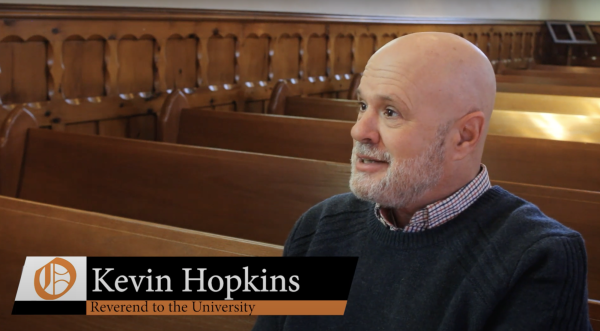Campus views differ on Paycheck Fairness Act
A recent bill aimed at erasing the line between genders has once again been rejected by the U.S. Senate, leaving politicians split along customary party lines.
The Paycheck Fairness Act was filibustered by Senate Republicans for a third time last week amid a wider campaign by the Obama administration for granting women equal pay across the country.
Baker University students and faculty are also split on what this act would mean for gender equality.
Susan Emel, professor of communication studies, thinks the passage of this bill would have been a step in the right direction.
“I think the second wave of the feminist movement was so visible and now so long ago that people think there is no inequality left, and yet the biggest impact on women’s lives is their paychecks,” Emel said.
The commonly cited statistic that prompted lawmakers to draw up further legislation on equal pay for equal work is that on average, women only make 77 cents for every dollar a man makes.
While the act aims to “provide more effective remedies to victims of discrimination in the payment of wages on the basis of sex,” Alan Grant, professor of business and economics, does not think the bill would remedy any gender inequalities. He said economists have shown a large amount of the pay gap is not due to discrimination but rather quantifiable differences.
“Take a woman and a man in the labor force of the same age and typically what you find is that a woman will have less experience, less tenure on the job, more frequent exits from the labor force and more re-entry into the labor force,” Grant said. “So she’s missing the sort of long period of sustained wage growth that a male might receive.”
Grant said that some of the disparity in salaries between men and women also arises from the types of jobs usually filled by each gender.
“If you factor in the over-representation of males in highly paid professions in things like computer science and engineering and the over-representation of females in low-paid professions like social work and elementary education, that accounts for a lot of the pay gap, too,” Grant said. “Women are typically in less specialized work that gets rewarded less in the market place because there’s more people around that can do it.”
Grant gave one example: “So you take the 20-odd cent pay gap and you account for the productivity related factors, and it turns out that you’re in the neighborhood of a gap not of 20 cents but maybe of 2 or 3, possibly up to 5 cents,” he said.
With such contrasting statistics, it is hard for a common voter to know which numbers are more accurate. Emel suggests looking close to home in order to form an opinion.
“The only way I know to deal with it is to break it down into your current environment,” Emel said. “Where you work, what is the difference and can you have access to that information? That’s no small matter.”
Baker releases average faculty salaries, broken down by rank and gender, each year as part of the fact book.
Over the past five years, men have been paid more on average each year than women of the same faculty rank. In 2012, male assistant professors were paid, on average, nearly 6 percent more than female assistant professors. Male associate professors were paid 8 percent more and male professors 9 percent more than their female counterparts.
Senior Jasmyn Turner said she has not had to worry about salary inequalities yet but probably will as she hopes to enter the workforce in a few years as a professor herself.
“I’d like to be a professor in exercise science, and I guess there are still just the stereotypes that women have to fight against to prove that they can be equal,” Turner said.
Despite some of the statistics and common sentiments of inequality, many Republicans and Obama opponents have said the Paycheck Fairness Act is merely a political ploy to encourage more young female voters to participate in the upcoming midterm elections.
Regardless of what the act really was intended to do, Grant doesn’t think simply increasing pay for women will solve the gender inequalities.
“I think back to the talking Barbie from the 1990s that would say, ‘Math is hard,’” Grant said. “There’s some truth in the idea that more women go into elementary education and men go into engineering, not entirely based off individual choice or individual mental differences, but maybe shaped some by cultural influences and discrimination. And so that kind of cultural bias could be responsible for a good chunk of that pay gap. But you can’t fix that by jacking up pay, you have to fix that by actually fixing it.”






